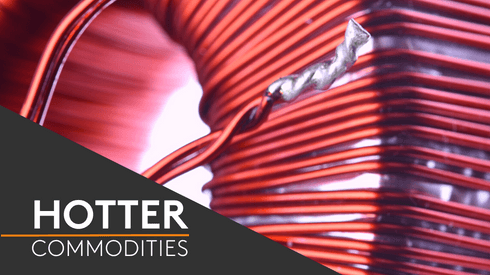With the market now steadily recovering from the previous price collapse and copper prices up more than 25% in the United States over the past year, capital is beginning to return to the market and Pumpkin Hollow is finally set to become a reality.
“There is a real opportunity to take advantage of a cycle,” Bonifacio told American Metal Market in an interview. “It’s been a very challenging couple of years.”
Located a couple hours’ drive southeast of Reno, Nevada, Pumpkin Hollow is unique in that it is not only the largest permitted project in the US but is also situated close to modern infrastructure that includes affordable power, workers and a state with a long tradition of mining.
As part of an agreement between Nevada Copper and its financiers – including Red Kite and Concord Resources Ltd – the company will receive a $378-million financing and recapitalization package designed to restart construction on the project, with first production anticipated in 2019.
It is a quick turnaround for a mining site but Bonifacio reiterated that the major construction was done before copper prices capsized, noting that the property has an existing concrete-lined shaft that descends nearly 2,000 feet along with underground drill stations and a core group preventing the site from flooding.
The miner estimates that production will average 60 million lb of copper at a cost of $1.86 per lb. It is a feasible proposition, with operating expenditures projected to be $1.68 per lb and Comex copper recently trading around $3.20 per lb.
But it is also a symbolic deal demonstrating that the industry is finally beginning to dip its proverbial toe into the water once again.
In 2015, the commodities industry was about to experience a major rout that would send prices to the lowest point since the Great Recession, force countless layoffs and have the world’s largest miners searching for answers while they sliced capital expenditure and watched as their previous ironclad finances disintegrated.
For Bonifacio, it was just another year confirming an axiom derived from more than three decades of experience: copper prices are cyclical, for the good and for the bad.
On August 14, 2015, the company announced that plans for a 70,000-ton-per-day operation in Nevada had finally received full permitting for construction and operation. Little did he – or the entire industry, for that matter – realize what was to become of the site and the commodities world at large.
In order to survive the fallout in copper prices, sacrifices were made both in terms of scope and in personnel, with the company making the decision to keep only a small cadre of workers.
“We had a significant layoff with people at the project level and the intent at that point was, in very simple terms, to hold on,” Bonifacio said after noting that the company had already spent $220 million on construction costs.
Following the suspension, the company opted to narrow the scope of the project and focus on high-grade underground mining to help generate returns before embarking on a large project that eventually could see annualized production reach 250-300 million lb of copper.
Long term, Bonifacio explained that the initial $1.1 billion production cost included an open-pit project with total reserves eclipsing 5 billion lb of copper and a mine life nearing a quarter of a century.
A bullish factor for Nevada Copper and the entire global industry is emanating from the sustained deficit in the global copper market, which stood at 175,000 tonnes in the first 10 months of 2017, according to the International Copper Study Group. The Lisbon, Portugal-based group previously forecast the full-year deficit at 150,000 tonnes for 2017 and 105,000 tonnes for this year.
A sustained shortfall is placing upward pressure on the concentrates market, and multiple sources have told American Metal Market that the market will only become more competitive as the year progresses.
Even after the volatility recorded over the past few years, Bonifacio always believed in the underlying fundamentals of the market and is now looking at a landscape that again is tilting in the miner’s favor. In the end, copper demand isn’t going away and “there isn’t that much copper supply in North America, let’s be frank,” he added.





